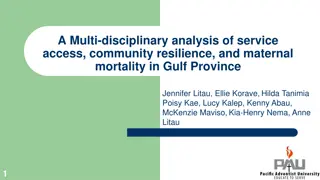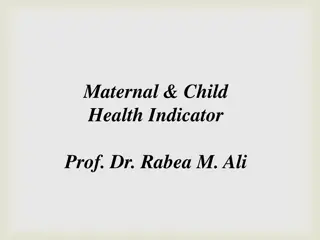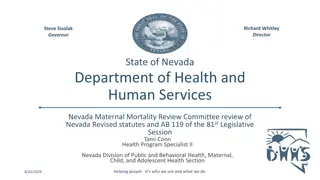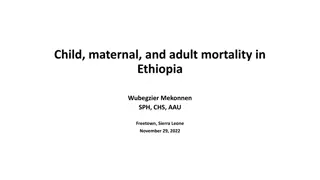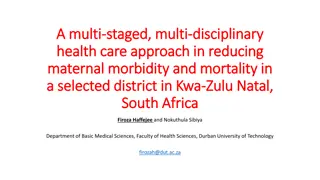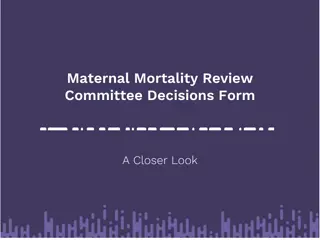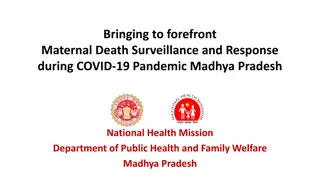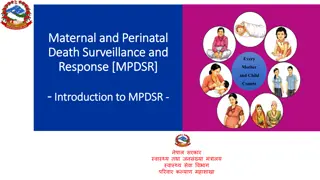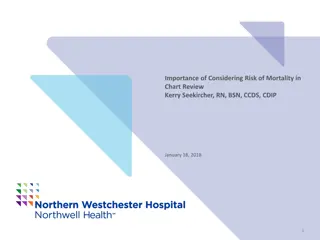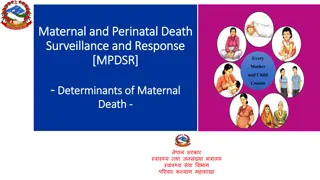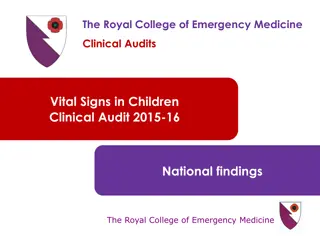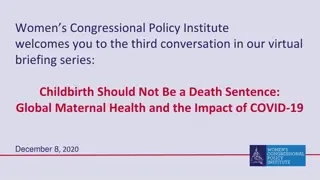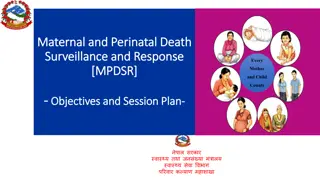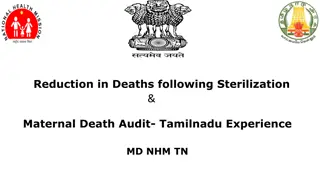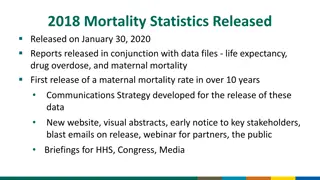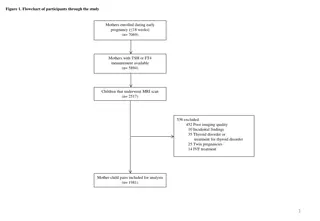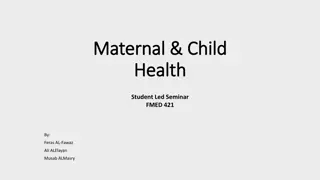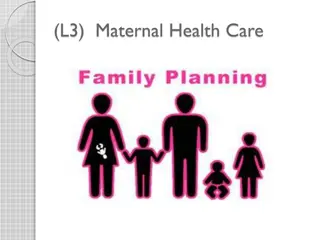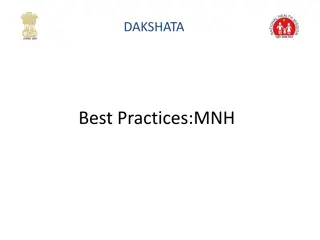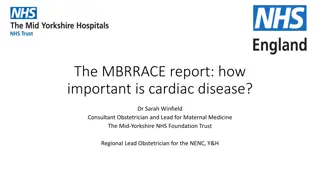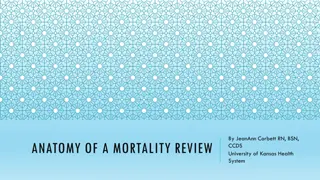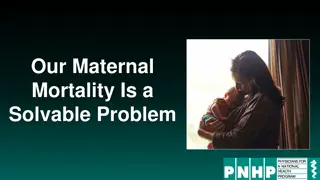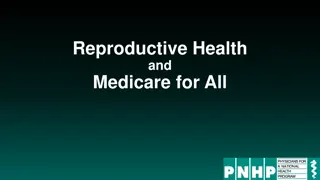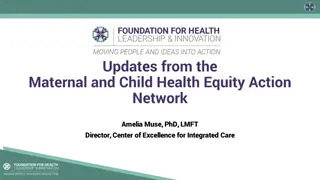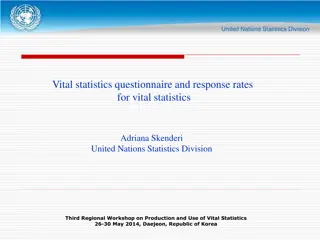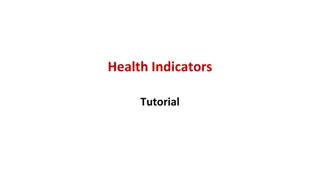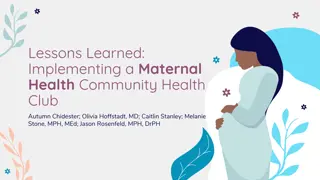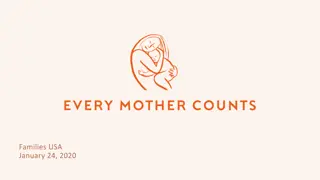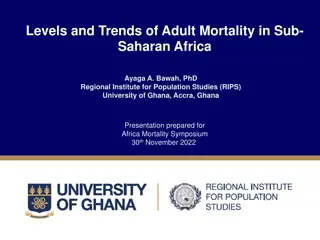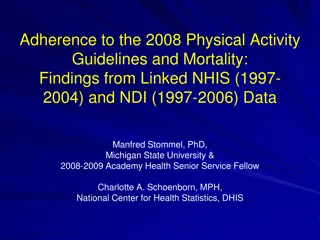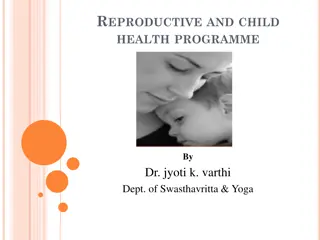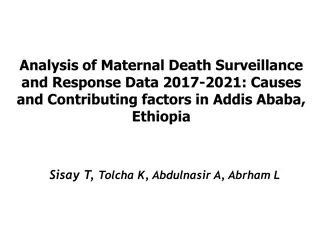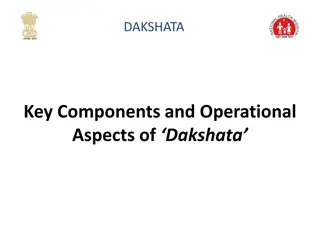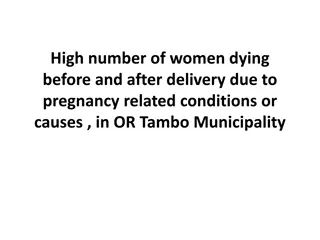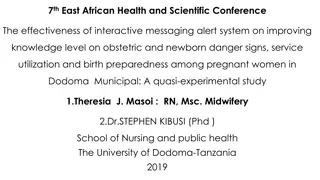Understanding Community Vital Signs and Maternal Mortality Review Committee Findings
Explore the importance of Community Vital Signs and Maternal Mortality Review Committee in assessing pregnancy-related deaths. Learn about the factors contributing to these deaths, preventive measures, and anticipated impacts of addressing contributing factors. Delve into chains of risk, like morbidity and mortality related to trauma and hemorrhage, and ways to prevent complications through public health prevention strategies.
Download Presentation

Please find below an Image/Link to download the presentation.
The content on the website is provided AS IS for your information and personal use only. It may not be sold, licensed, or shared on other websites without obtaining consent from the author. Download presentation by click this link. If you encounter any issues during the download, it is possible that the publisher has removed the file from their server.
E N D
Presentation Transcript
2.3 Community Vital Signs & the Chain of Risk ERASE-MM Community Vital Signs Project www.erase-mm-cvsproject.org
Maternal Mortality Review Committee 1. Was the death pregnancy related? 2. What was the cause of death? 3. Was the death preventable? 4. What were the factors contributing to this death? 5. What are the recommendations to address contributing factors? 6. What is the anticipated impact of those actions if implemented?
Maternal Mortality Review Committee 1. Was the death pregnancy related? 2. What was the cause of death? 3. Was the death preventable? 4. What were the factors contributing to this death? 5. What are the recommendations to address contributing factors? 6. What is the anticipated impact of those actions if implemented?
Pregnancy Related Death A death during or within one year of pregnancy, from a pregnancy complication, a chain of events initiated by pregnancy, or the aggravation of an unrelated condition by the physiologic effects of pregnancy https://reviewtoaction.org/learn/definitions
Morbidity and mortality: Chains of risk MVC Trauma Massive hemorrhage
Morbidity and mortality: Chains of risk MVC Trauma Massive hemorrhage Ejected from vehicle
Morbidity and mortality: Chains of risk MVC Trauma Drove off road Massive hemorrhage Ejected from vehicle
Public Health Prevention Reduce complications of established disease Tertiary Early detection & treatment Prevent progression Secondary Primary Avoid development of disease Remove a risk factor
Morbidity and mortality: Chains of risk MVC Trauma Drove off road Massive hemorrhage Ejected from vehicle 3 EMS & Golden Hour Level 1 Trauma Services Blood transfusion
Morbidity and mortality: Chains of risk MVC Trauma Drove off road Massive hemorrhage Ejected from vehicle 3 2 Seatbelt restraint Airbags Federal safety mandates State enforcement EMS & Golden Hour Level 1 Trauma Services Blood transfusion
Morbidity and mortality: Chains of risk MVC Trauma Drove off road Massive hemorrhage Ejected from vehicle 3 2 1 Seatbelt restraint Airbags Federal safety mandates State enforcement EMS & Golden Hour Level 1 Trauma Services Blood transfusion Speed limits & enforcement Highway engineering Rumble strips
Morbidity and mortality: Chains of risk Pre-eclampsia Cerebral Infarction
Morbidity and mortality: Chains of risk Pre-eclampsia Few PNC visits Cerebral Infarction
Morbidity and mortality: Chains of risk Pre-eclampsia Few PNC visits Cerebral Infarction No providers who take Medicaid within 100 miles
Morbidity and mortality: Chains of risk Pre-eclampsia Unstable housing & transportation; No child care; Few PNC visits Cerebral Infarction No providers who take Medicaid within 100 miles
Morbidity and mortality: Chains of risk Emergent delivery and management in high level facility 3 Pre-eclampsia Unstable housing & transportation; No child care; Few PNC visits Cerebral Infarction No providers who take Medicaid within 100 miles
Morbidity and mortality: Chains of risk Emergent delivery and management in high level facility Patient educ on warning signs Case mgmt Nurse home visit 2 3 Pre-eclampsia Unstable housing & transportation; No child care; Few PNC visits Cerebral Infarction No providers who take Medicaid within 100 miles
Morbidity and mortality: Chains of risk Emergent delivery and management in high level facility Patient educ on warning signs Case mgmt Nurse home visit Telehealth or mobile clinic Rural hospital rescue Loan repayment 1/2 2 3 Pre-eclampsia Unstable housing & transportation; No child care; Few PNC visits Cerebral Infarction No providers who take Medicaid within 100 miles
Morbidity and mortality: Chains of risk Social services Transport voucher Eviction moratorium Emergent delivery and management in high level facility Patient educ on warning signs Case mgmt Nurse home visit Telehealth or mobile clinic Rural hospital rescue Loan repayment 1 2 1 3 Pre-eclampsia Unstable housing & transportation; No child care; Few PNC visits Cerebral Infarction No providers who take Medicaid within 100 miles
Acknowledgements The Community Vital Signs Project was developed by a team at Emory University with support from Centers for Disease Control and Prevention, Division of Reproductive Health Maternal Mortality Prevention Team Emory Team Michael Kramer (PI) Sarah Blake Autumn Watson Ariana Mora CDC Team David Goodman Maya Wright Debra Burch Ashley Busacker Julie Zaharatos Please use the Contact link at https://erase- mm-cvsproject.org to provide any feedback or ask questions This presentation was prepared by Michael Kramer


